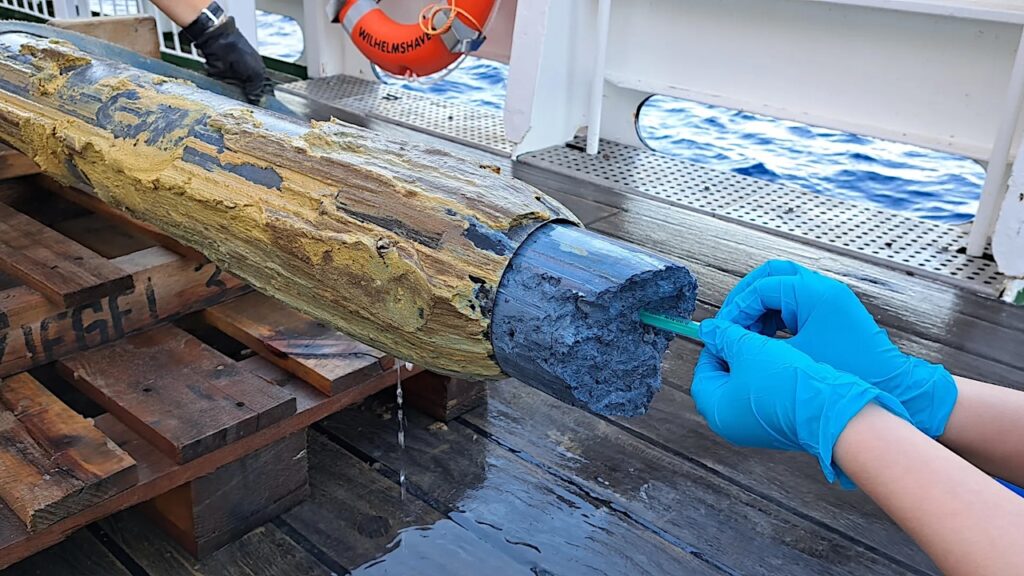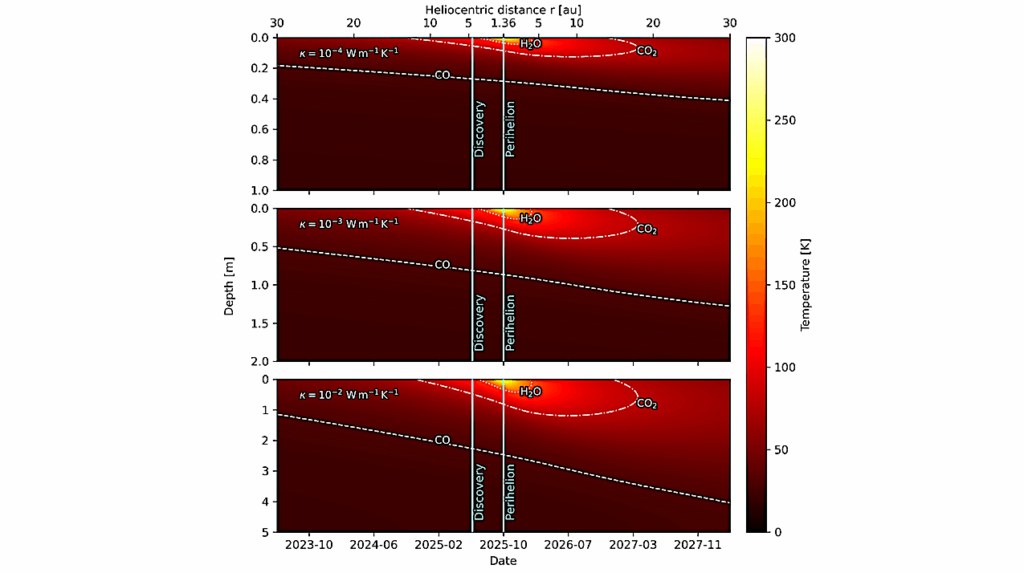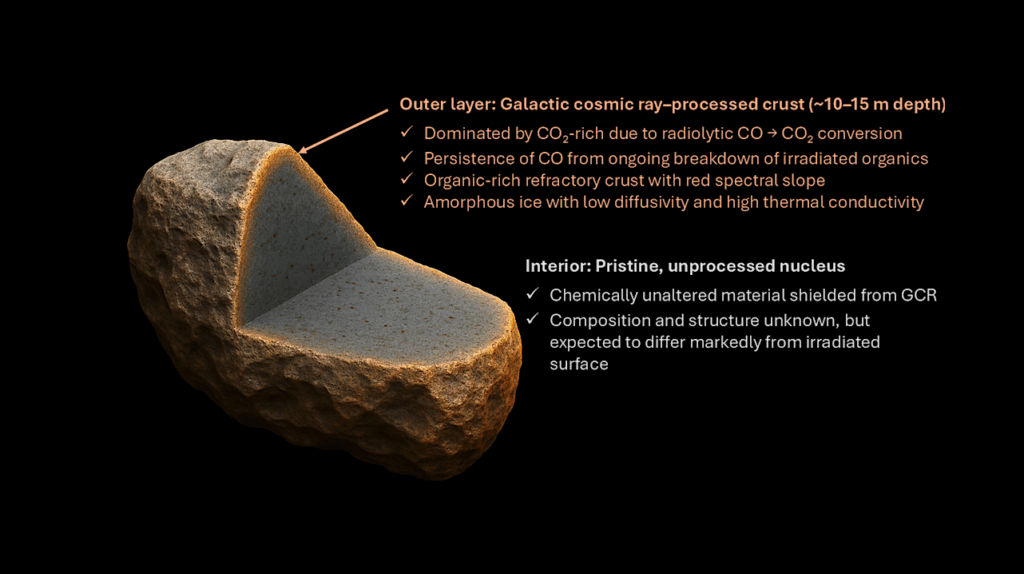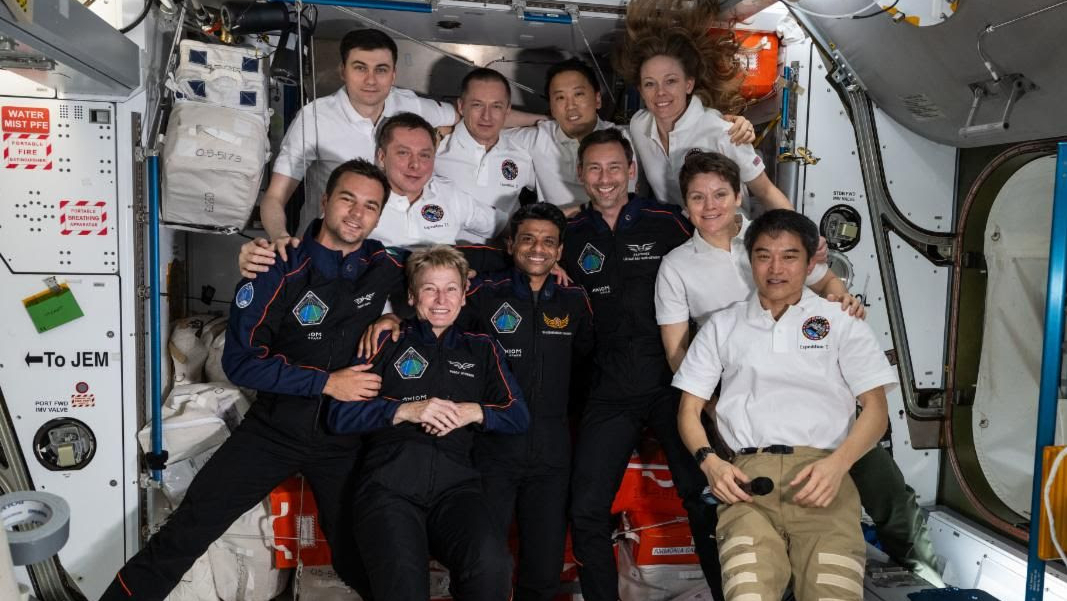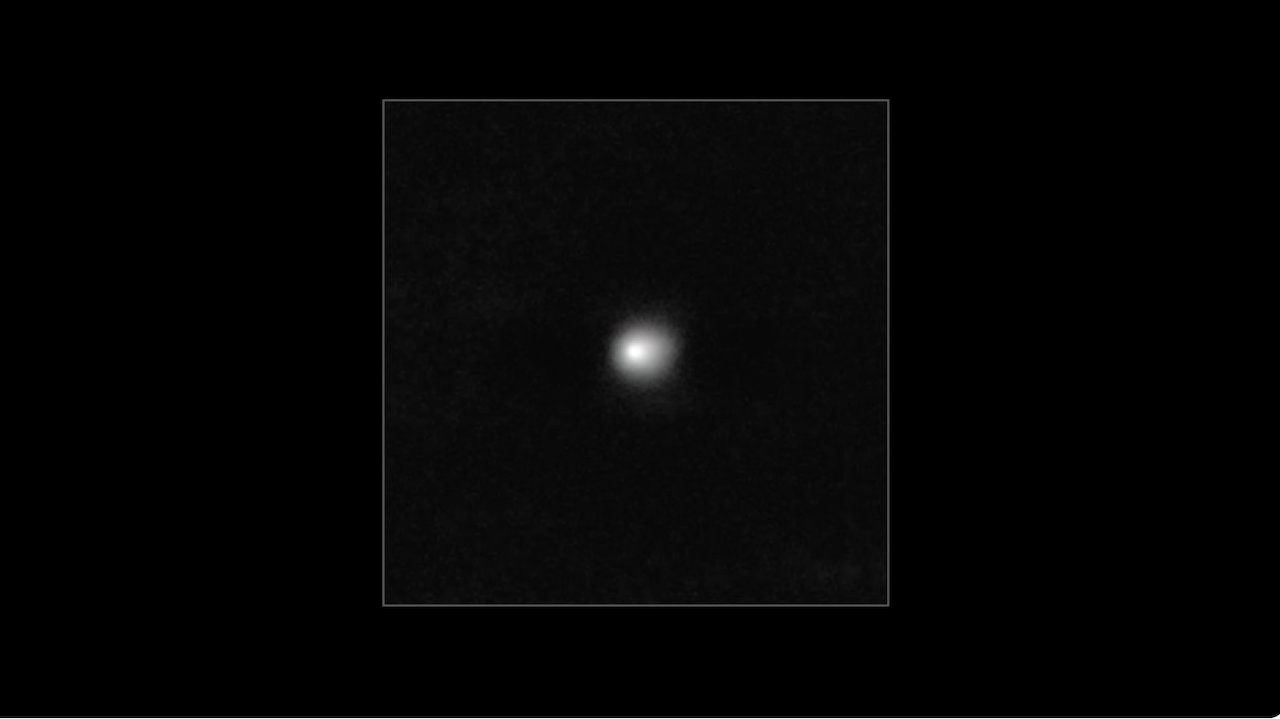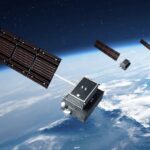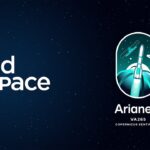Now Reading: TNO Colours Provide New Evidence For A Past Close Flyby Of Another Star To The Solar System
-
01
TNO Colours Provide New Evidence For A Past Close Flyby Of Another Star To The Solar System
TNO Colours Provide New Evidence For A Past Close Flyby Of Another Star To The Solar System
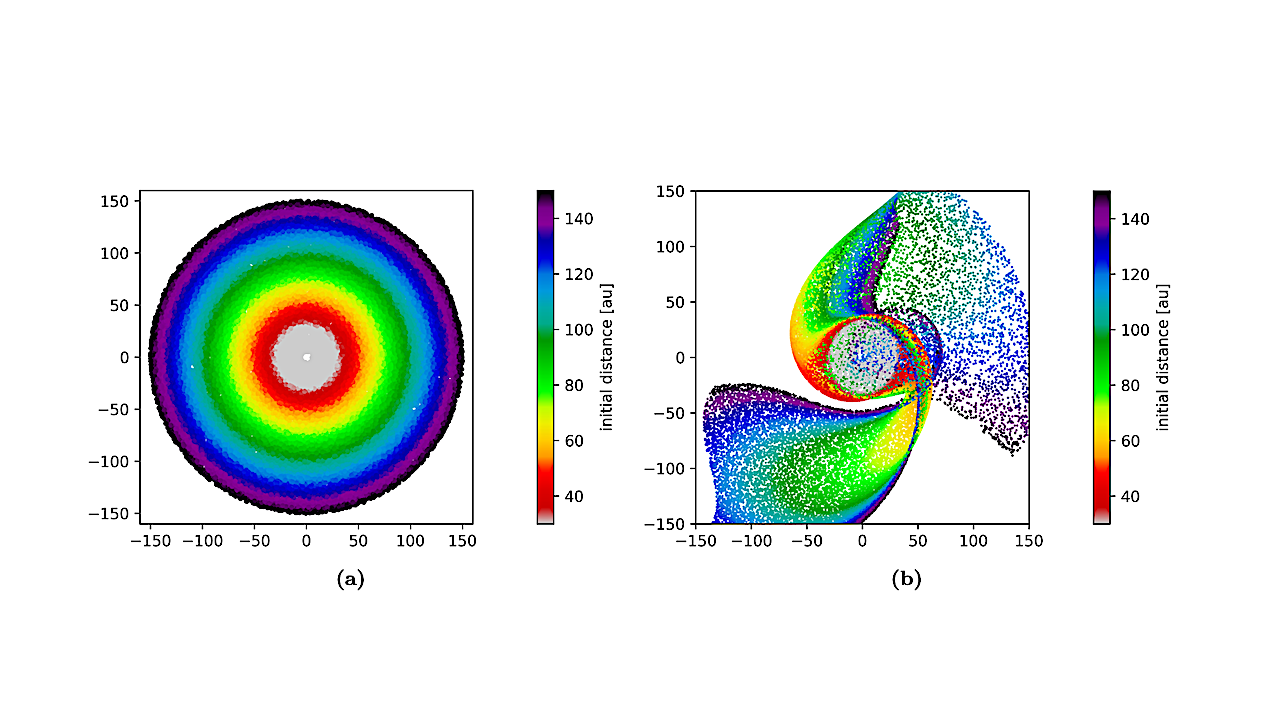
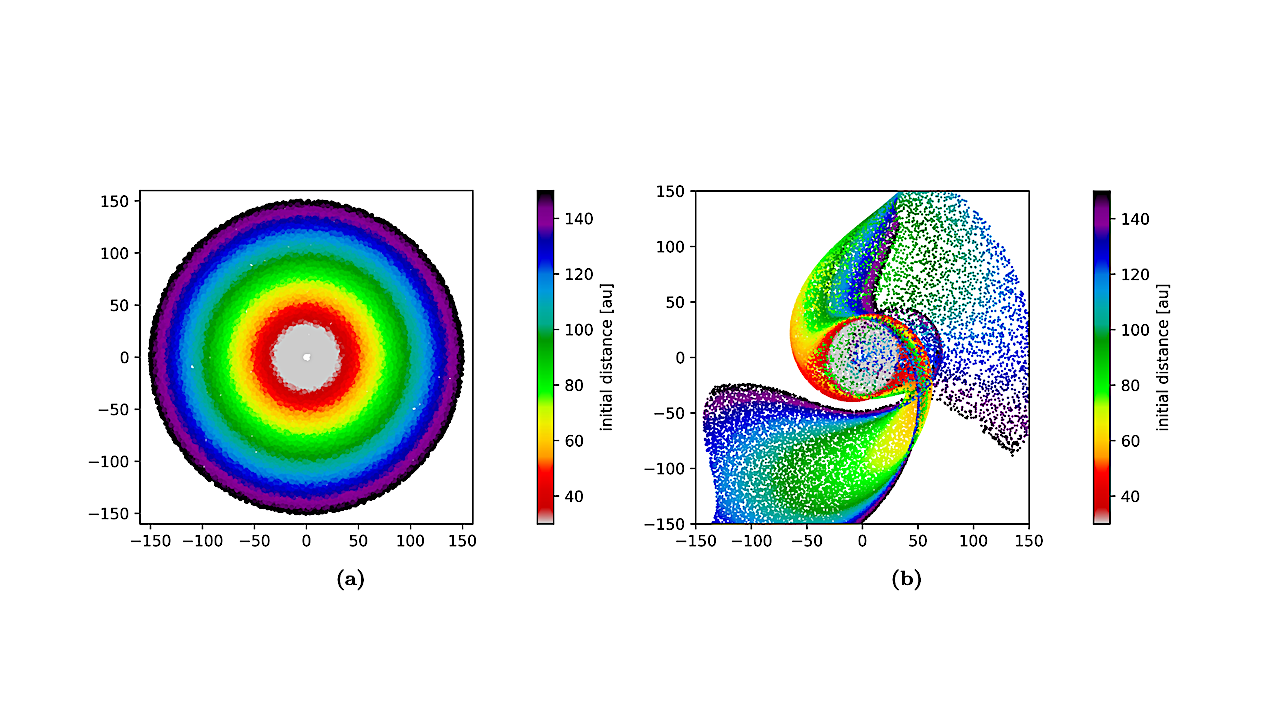
Effect of flyby. (a) The pre-flyby colour gradient in the simulated disc is depicted by a false colour scheme representing very red to blue-grey TNOs. The same colour scheme is used throughout the paper. (b) Simulation snapshot of the flyby 128 years after periastron passage. The perturber star approached from the bottom right and already left the shown area. Disc matter is transported inwards and outwards along the spiral arms, with a fraction of the test particles injected into the planet region. Only the particles remaining bound to the Sun are shown. — astro-ph.EP
Thousands of small bodies, known as trans-Neptunian objects (TNOs), orbit the Sun beyond Neptune. TNOs are remnants of the planets’ formation from a disc of gas and dust, so it is puzzling that they move mostly on eccentric orbits inclined to the planetary plane and show a complex red-to-grey colour distribution.
A close stellar flyby can account for the TNOs’ dynamics, but it is unclear if this can also explain the correlation between their colours and orbital characteristics. Assuming an initial red-to-grey colour gradient in the disc, our numerical study finds that the spiral arms induced by the stellar flyby simultaneously lead to the observed TNOs’ colour patterns and orbital dynamics.
The combined explanation of these TNO properties strengthens the evidence for a close flyby of another star to the young Solar System. Our study predicts that (1) small TNOs beyond 60 au will mostly be grey, and (2) retrograde TNOs will lack the colour most common to high-inclination TNOs. The anticipated TNO discoveries by the Vera Rubin telescope will be able to test these predictions. A confirmed flyby would allow us to reveal the chemical composition of the Solar System’s primordial disc.
Susanne Pfalzner, Frank W. Wagner, Paul Gibbon
Comments: 13 pages, 5 figures plus 4 in Appenidix, accepted for ApJ Letters
Subjects: Earth and Planetary Astrophysics (astro-ph.EP); Astrophysics of Galaxies (astro-ph.GA)
Cite as: arXiv:2507.06693 [astro-ph.EP] (or arXiv:2507.06693v1 [astro-ph.EP] for this version)
https://doi.org/10.48550/arXiv.2507.06693
Focus to learn more
Submission history
From: Susanne Pfalzner Prof Dr
[v1] Wed, 9 Jul 2025 09:37:35 UTC (22,112 KB)
https://arxiv.org/abs/2507.06693
Astrobiology, Astrochemistry, Astrogeology, Interstellar,
Stay Informed With the Latest & Most Important News
Previous Post
Next Post
-
 012024 in Review: Highlights from NASA in Silicon Valley
012024 in Review: Highlights from NASA in Silicon Valley -
 02Panasonic Leica Summilux DG 15mm f/1.7 ASPH review
02Panasonic Leica Summilux DG 15mm f/1.7 ASPH review -
 03How New NASA, India Earth Satellite NISAR Will See Earth
03How New NASA, India Earth Satellite NISAR Will See Earth -
 04And Thus Begins A New Year For Life On Earth
04And Thus Begins A New Year For Life On Earth -
 05Astronomy Activation Ambassadors: A New Era
05Astronomy Activation Ambassadors: A New Era -
06SpaceX launch surge helps set new global launch record in 2024
-
 07Space Force plans new ‘Futures Command’ amid pressure to speed up modernization
07Space Force plans new ‘Futures Command’ amid pressure to speed up modernization













